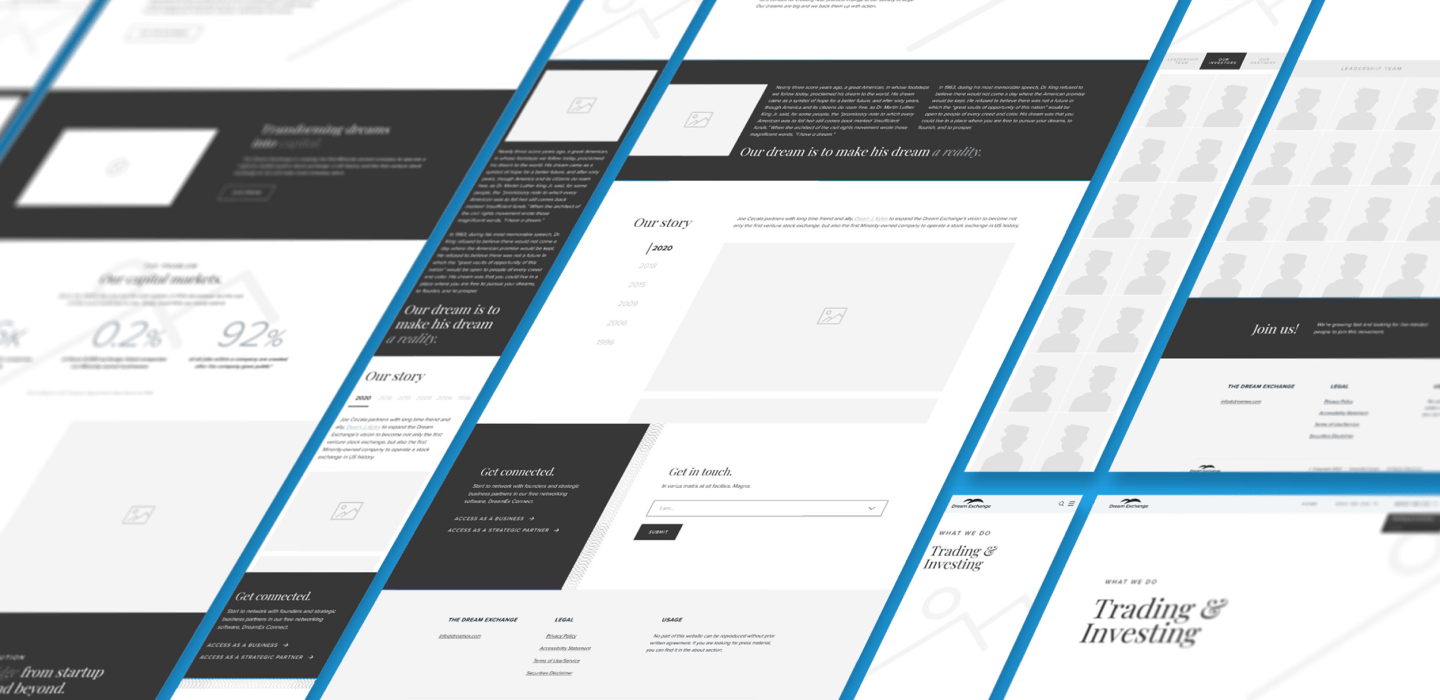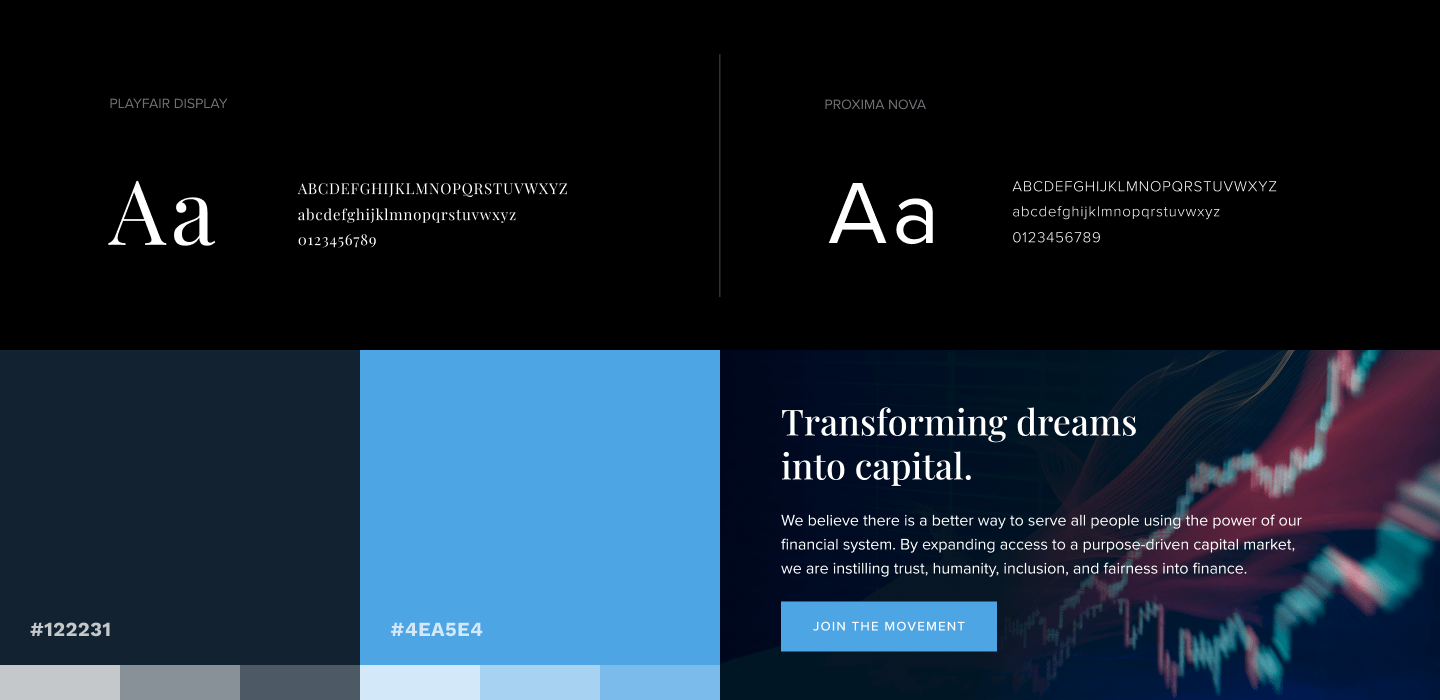Menu
Why Choose Us?Dream Exchange

Dream Exchange was founded in 2018 by a group of seasoned finance professionals who aim to build the first US venture stock exchange for small and medium-sized businesses. Over the last 20 years, these small-to-mid-sized businesses have been shut out of capital markets that provide the kind of financing vehicles (such as stock) that have funded many of today’s largest, most successful businesses.
The founders envision the Exchange as “democratizing” the Initial Public Offering (IPO) market by allowing underrepresented founders of early-stage and emerging enterprises to leverage public capital markets to issue early-stage stock to fund and scale their businesses. This would achieve the Dream Exchange’s ultimate vision: to greatly expand access to capital, stimulate innovation, create jobs, and build wealth in all communities.
The founder and CEO of Dream Exchange has been working with members of the US Senate and House of Representatives for more than seven years to craft legislation, named the Main Street Growth Act, that would allow for the creation of such an exchange. The legislation, which has bi-partisan support would allow for this new type of exchange to exist, however, in addition to the venture exchange, Dream Exchange intends to open a fully licensed National Market System Stock Exchange similar to the NASDAQ and NYSE.

As a startup company with a strong mission and a stellar management team in place, but whose services are still in development, the Dream Exchange needed a website that conveyed its vision convincingly while presenting complex and technical issues to both lay and financially savvy audiences. They also needed an online presence to generate leads and attract members to participate in the future exchange. This required a site that could evolve and grow over time without requiring a total rebuild in a few years’ time.

Dream Exchange’s chief marketing officer found the Usman Group through our listing on Clutch, an independent ratings agency that provides a directory of over 150,000 vetted agencies across the US that provide quality services and solutions to businesses.
The CMO had also contacted and received several bids from other web design firms that promised to build a site cheaply and quickly. But what he liked about us, he said, wasn’t only our track record and the expertise of our team. Our firm also resonated with this client because:
To think big, however, you’ve got to start small. In web design, that means: Before you execute, you need a strategy.
In his book, The Business of Expertise, author David C. Baker describes the strategy/execution duality as a house with two rooms—one small, one big. The small room—the entryway—is for strategy. The big room is for execution. Often, clients don’t want to come in through the entryway, they just want to enter the big room first, get something built and move on.
As digital strategists, however, we encourage our clients to, first, think strategy. This is especially important for startups like the Dream Exchange that are “works in progress.” That’s how we began our engagement with the Dream Exchange.
Following our initial discovery phase—where we do a deep dive into our client’s mission, goals, and competitors—we worked on fleshing out four key elements:
Personas. These are fictitious profiles of the kinds of users the client envisions serving. These profiles later inform the website’s user experience.
Site map. These are the blueprints that lay out the site’s structure and flow, and the possible journeys of each persona through the site.
Content. This includes both text and images that appear on the site. What are the key themes and messages the site needs to convey? What does the client want users to do at various points in their journeys through the site? What are the calls to action the client wants users to take? What is the client’s tone and style; and how will those relate to the different characteristics and needs of their users? What type of imagery (photos, illustrations, graphical representations) will best convey the client’s intent?
Maintenance. Ultimately, we build websites that the client can easily manage themselves, such as adding new content, archiving outdated information, replacing and adding images, fixing broken links, correcting typos, and downloading leads from a form into a database. In the strategy phase, we determine the “tool box” the client will need to perform those functions in-house.
They understand what we’re doing and give us what we need instead of just a product they’re trying to sell.
Marketing Director

After presenting the Dream Exchange team with a workable strategy, they decided to move forward with us—that is, we then proceeded to the second, bigger room to build the site itself. As in every one of our engagements, we took a user-centric approach (that is, designing from the perspective of the user, NOT the client) and involved the client as a member of our team.
Often, after the discovery process, a web design team will retreat to their own corner to create a first iteration of a site that they will then “throw over the fence” to the client for feedback. They will then spend several rounds of back and forth (and billable hours) to get to a place of general agreement (or, “good enough”) where everyone (or perhaps no one) is satisfied with the result.
Instead, bringing on the CMO as a member of the design team from the start of this project had definite benefits. While this may not be feasible for every client (a lack of capacity or creative acumen are typical obstacles), it was a winning approach with the Dream Exchange. It gave their team buy-in and a sense of ownership in the project’s outcome.
Some might call it the “Ikea effect”—that is, when people place more value in things they have put the effort into making or building themselves. What we call it, simply, is collaboration.
Dream Exchange’s website went live in the Fall of 2022. We continue working with their team on future initiatives to widen their exposure and their mission to new audiences. As the Main Street Growth Act wends its way through Congressional committee hearings and the legislative process, we are banking that their dream will become a reality—and we’ll be a stronger, better nation as a result.